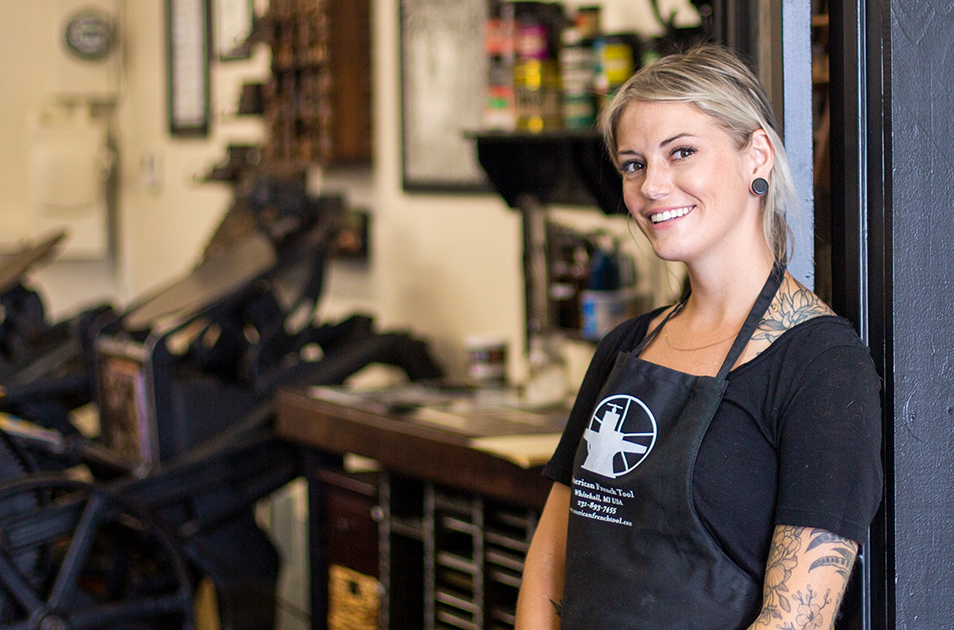Contact us
401 W. Kennedy Blvd.
Tampa, FL 33606-13490
(813) 253-3333
When Ali Norman was first introduced to printmaking, it spoke to her love of history.

Ali Norman, a UT part-time art and design instructor, recently cut the ribbon on Labyrinth Studios, her printmaking and retail shop with small gallery in the Seminole Heights area of Tampa.
“Pretty much any of these super old techniques that take way too long and are ridiculous – those are the things that I like,” said Norman, a UT part-time art and design instructor. “I’m basically a huge nerd.”

Printmaking involves transferring ink from a matrix (such as copper or polymer plates, stone or blocks of wood) to a sheet of paper or other material.

“Pretty much any of these super old techniques that take way too long and are ridiculous – those are the things that I like,” said Norman.
“I really thrive on professor-student relationships. The closer I am with a professor and the more willing a professor is to help me, the more involved I like to become in the process. That’s where I picked up my liking for printmaking because I had such a wonderful introduction into it,” said Henri, an art major with a concentration in printmaking and illustration.

Eliza Henri ’22 helped Norman restore the 1880s paper cutter, pictured left, which had been in a barn for several decades before Norman received it this year.

Labyrinth is home to several old-school machines such as an 1880s paper cutter and a 1923 Chandler & Price letterpress.
Have a story idea? Contact Jamie Pilarczyk, Web Writer
Read more UT Life stories.
Subscribe to News and UT Life.
More UT News